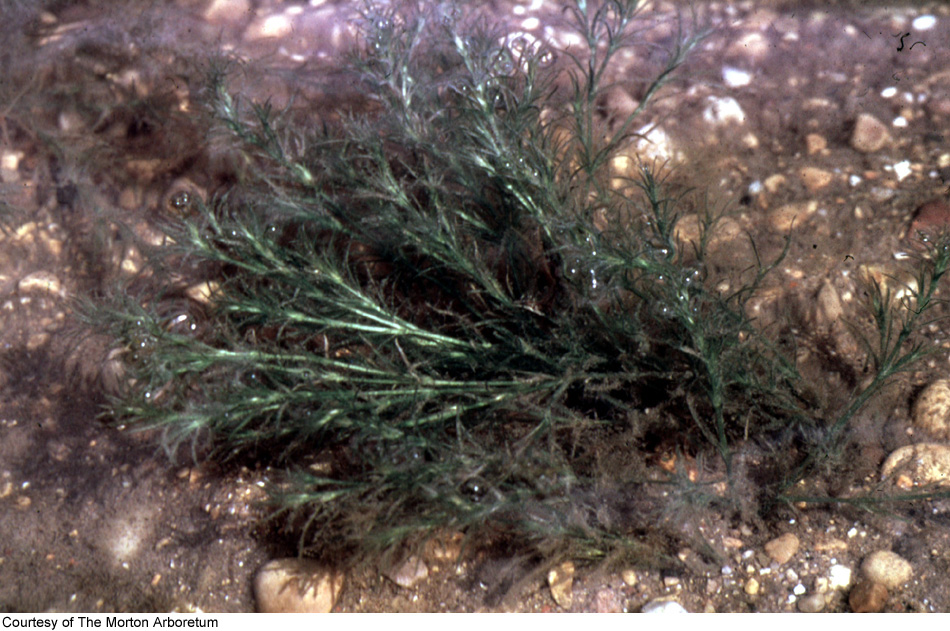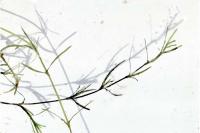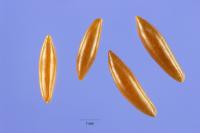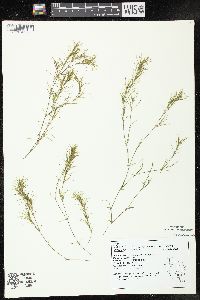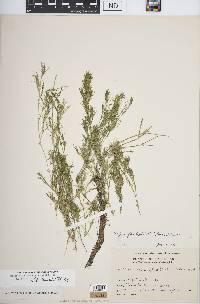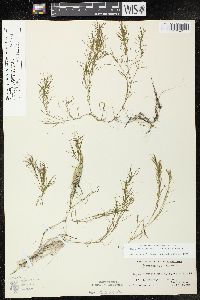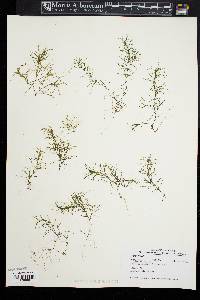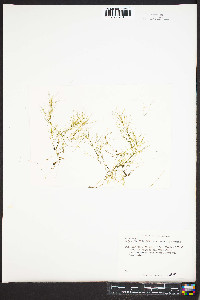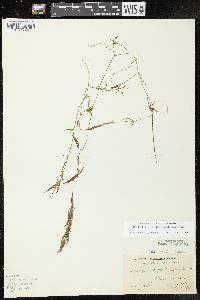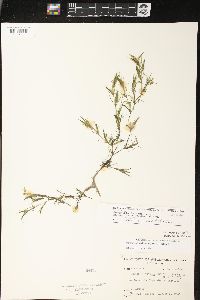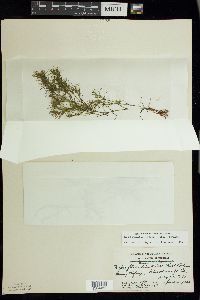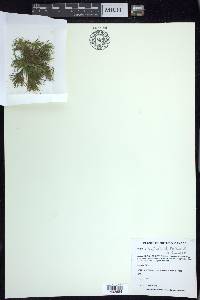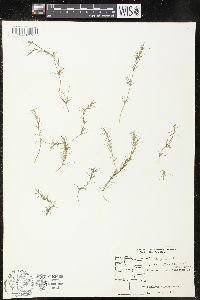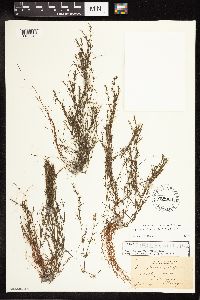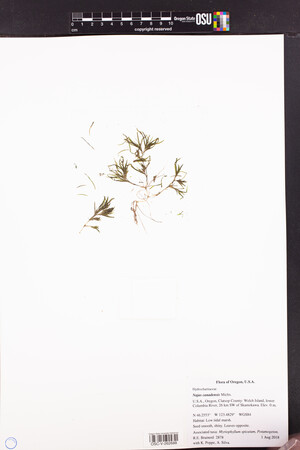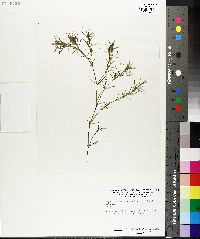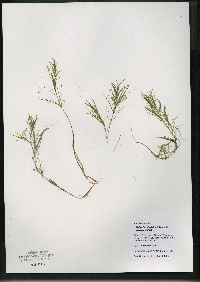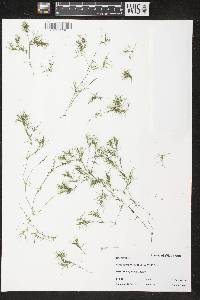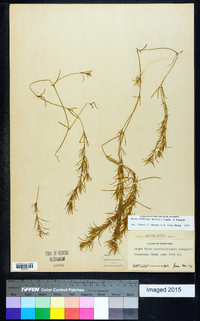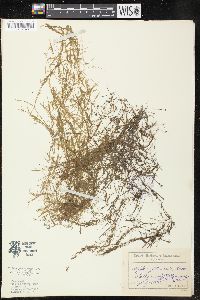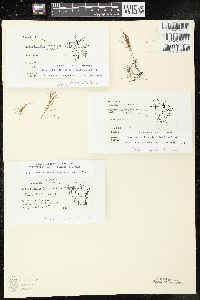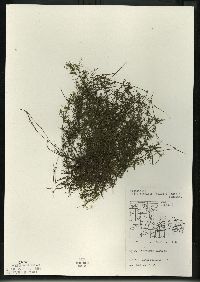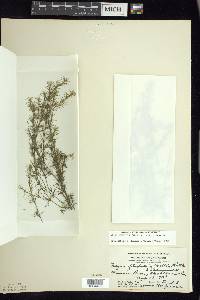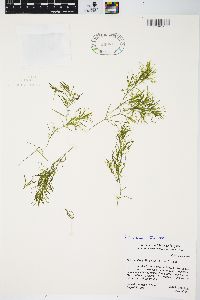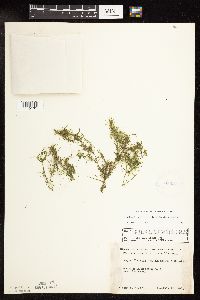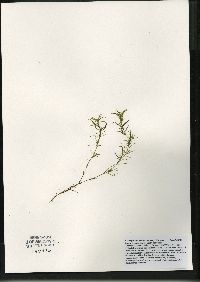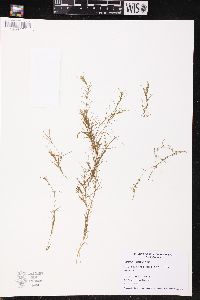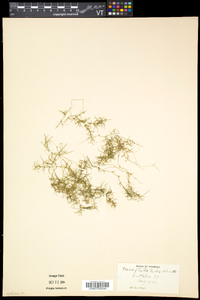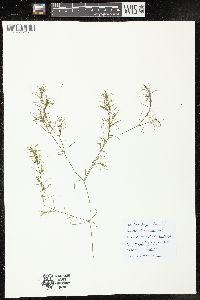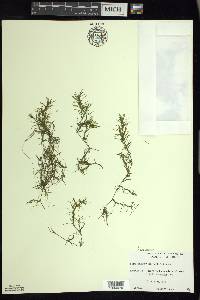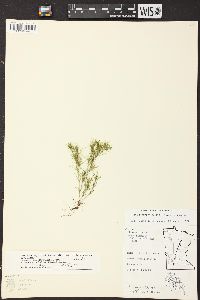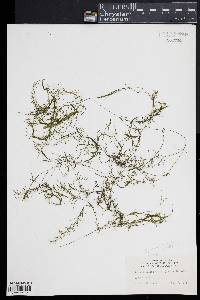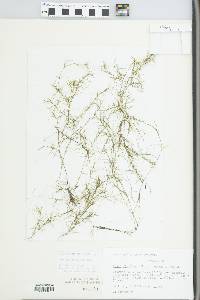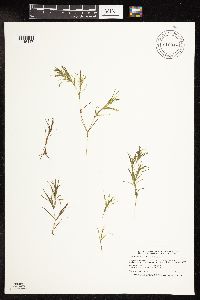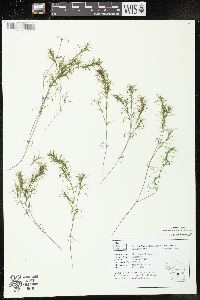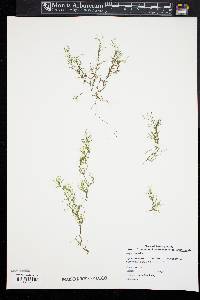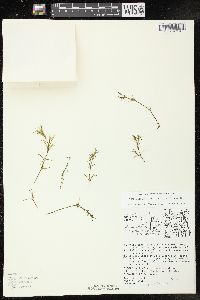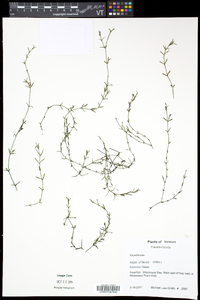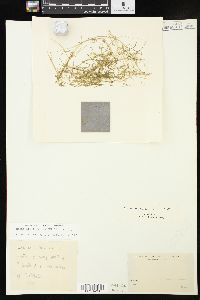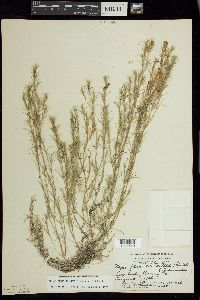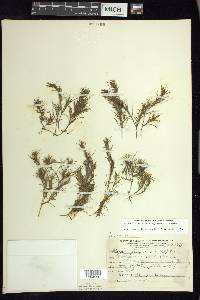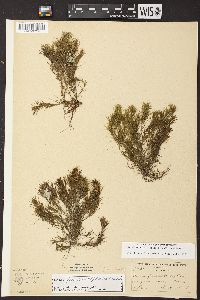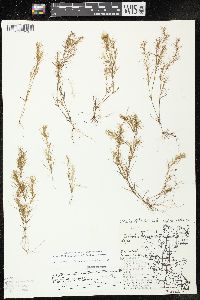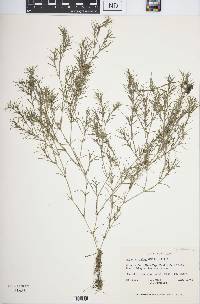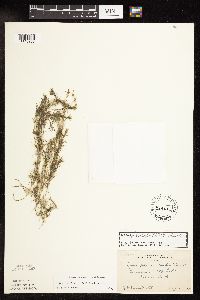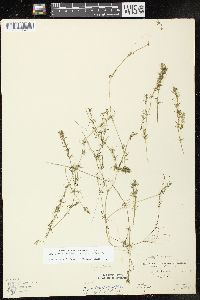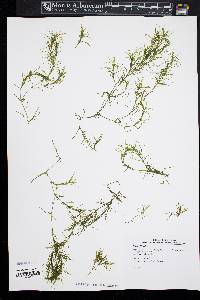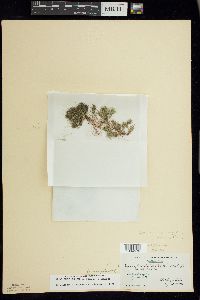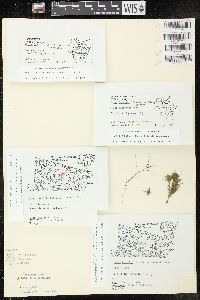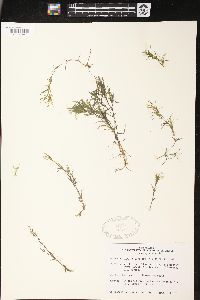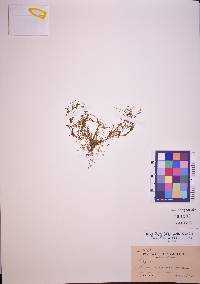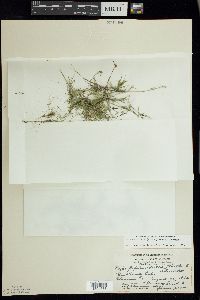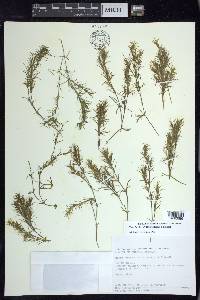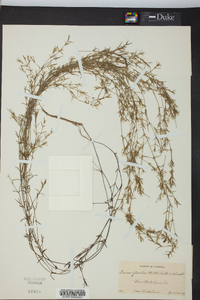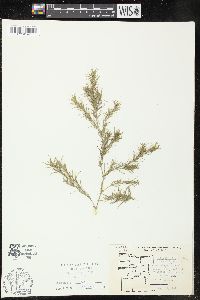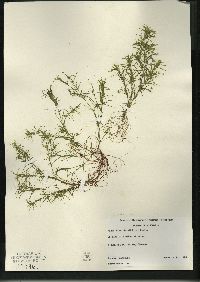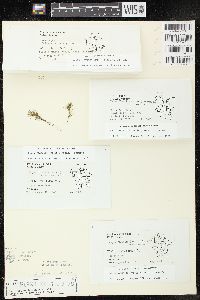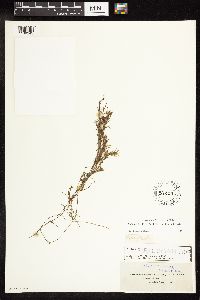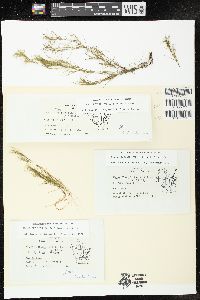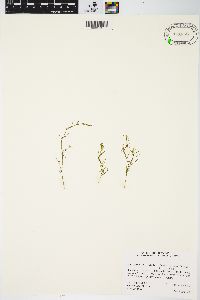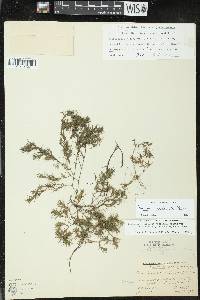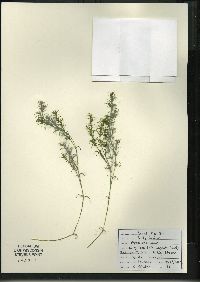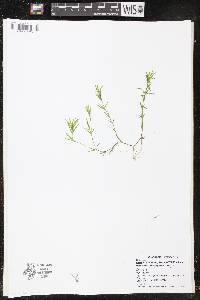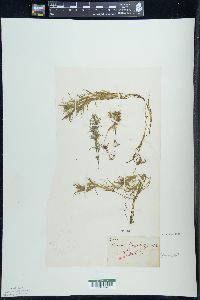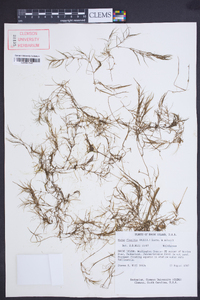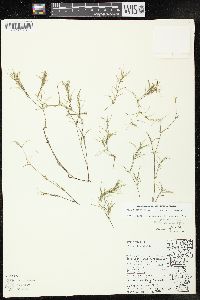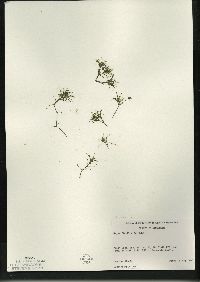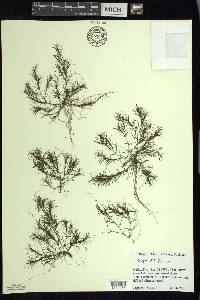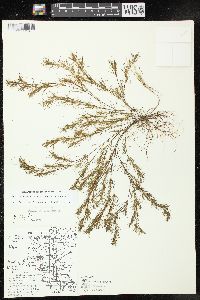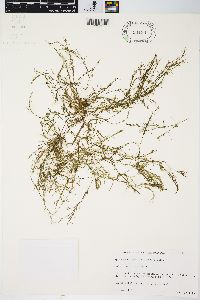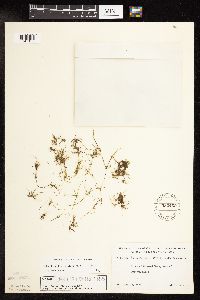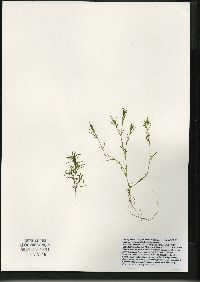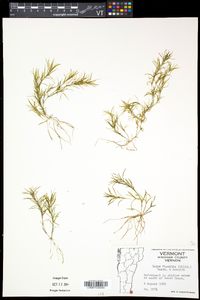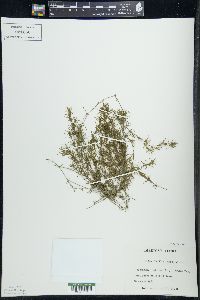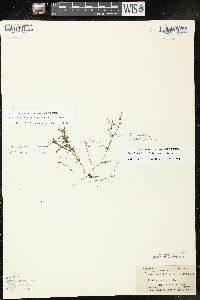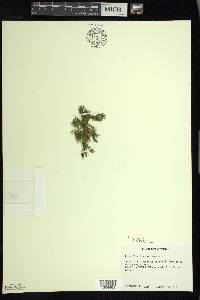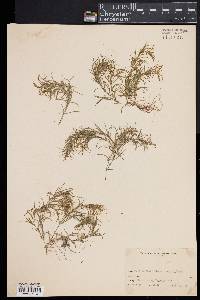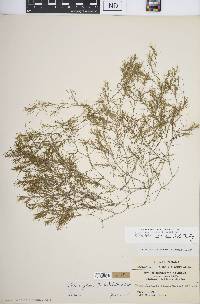Najas flexilis
|
|
|
|
Family: Hydrocharitaceae
nodding waternymph, more...Northern Waternymph, Wavy Waternymph, slender niad
[Caulinia flexilis Willd., moreNajas caespitosa (Maguire) Reveal, Najas caespitosus , Najas canadensis Michx., Najas flexilis subsp. caespitosa Maguire, Najas flexilis subsp. caespitosus , Najas flexilis var. congesta Farw., Najas flexilis var. robusta Morong] |
Stems often profusely branched distally, 2.5--5 cm ´ 0.2--0.6 mm; internodes 0.16--6.8 cm, without prickles. Leaves spreading to ascending with age, 0.2--0.6 cm, lax in age; sheath 0.7--1.6 mm wide, apex rounded; blade 0.2--0.6 mm wide, margins minutely serrulate, teeth 35--80 per side, apex acute, with 1--2 teeth, teeth unicellular; midvein without prickles abaxially. Flowers 1(--2) per axil, staminate and pistillate on same plants. Staminate flowers in distal axils, 1.1--2.7 mm; involucral beaks 3-lobed, 0.7--1.2 mm; anther 1-loculed, 1.1--2.7 mm. Pistillate flowers in distal to proximal axils, 2.5--4.7 mm; styles 1.5--1.7 mm; stigmas 3-lobed. Seeds not recurved, deep brown to yellow, narrowly to broadly obovoid, (1.2--)2.5--3.7 ´ 0.2--1.2 mm, apex with style situated at center; testa glossy, 3 cell layers thick, smooth; aeroleareoles regularly arranged in ca. 50 longitudinal rows, not ladderlike, 3--4-angled, longer than broad, end walls not raised. 2n = 12, 24. Flowering summer--fall. Lakes and rivers; 0--1500 m; Alta., B.C., Man., N.B., Nfld. and Labr. (Nfld.), N.S., Ont., P.E.I., Que., Sask.; Calif., Conn., Del., Idaho, Ill., Ind., Iowa, Ky., Maine, Md., Mass., Mich., Minn., Mo., Mont., N.H., N.J., N.Y., N.Dak., Ohio, Oreg., Pa., R.I., S.Dak., Utah, Vt., Va., Wash., W.Va., Wis.; Eurasia. In habit, Najas flexilis is most similar to N. guadalupensis. When seeds are present, N. flexilis can be separated easily from the latter species by the glossy, smooth, yellowish seeds that are widest above the middle. In the northern United States and in Canada, N. flexilis is by far the most common species of Najas, although in the Ohio and surrounding areas, it is disappearing as eutrophication (depletion of oxygen from lakes) continues (W. A. Wentz and R. L. Stuckey 1971).
Annual submersed aquatic herb to 0.5 m long Leaves: opposite, stalkless, 1 - 4 cm long, 0.2 - 0.6 mm wide, widening to a 0.7 - 1.6 mm sheath at the base, linear and tapering to a narrow pointed tip, with 35 to 80 teeth per side (may require a hand lens). Flowers: either male or female, found on the same plant (monoecious), borne in leaf axils, green, tiny. The 1.1 - 2.7 mm long male fowers have three-lobed beaks, and the 2.5 - 4.7 mm long female flowers have three-lobed stigmas and narrow styles. Fruit: achene-like, 2.5 - 3.7 mm long, 0.2 - 1.2 mm wide, spindle-shaped (fusiform) to inversely egg-shaped, with a paper-like and transparent fruit wall. The seed is yellow to brown, glossy, with 30 to 50 rows of lines. Stems: slender, highly branched, 5 - 50 cm long, 0.2 - 0.6 mm wide, rooting at the nodes. Similar species: Najas flexilis and Najas guadalupensis both have finely toothed leaves that can usually only be seen using a hand lens. Najas guadalupensis differs by having dull seeds and leaves with a rounded or abruptly pointed tip. Flowering: mid July to late August Habitat and ecology: Local in shallow water of ponds, lakes and often calcareous, slow-moving streams. Occurence in the Chicago region: native Notes: Molecular evidence and seed coat structure suggest the Najadaceae family is very similar to the Hydrocharitaceae family. Some botanists place Najas species in the Hydrocharitaceae family. Etymology: Najas comes from the Greek name for a river nymph, naias. Flexilis means flexible. Author: The Morton Arboretum Monoecious; stems 0.5-5 dm, 0.2-0.6 mm thick, often profusely branched above; lvs 1-4 cm נ0.2-0.6 mm, spreading or ascending, with sloping shoulders at the base and tapering above to a long, slender point, minutely serrulate with 35-80 unicellular teeth per side; anthers monothecal and with a single microsporangium; seeds (1.2-) 2.5-3.7 mm, smooth and glossy, yellow to deep brown, ±obovate, widest above the middle, very lightly areolate in ca 30-50 rows. In lakes and rivers; Nf. to B.C., s. to Va., W.Va., O., Ind., Io., Nebr., and Utah. Gleason, Henry A. & Cronquist, Arthur J. 1991. Manual of vascular plants of northeastern United States and adjacent Canada. lxxv + 910 pp. ©The New York Botanical Garden. All rights reserved. Used by permission. From Flora of Indiana (1940) by Charles C. Deam So far as known, this species is restricted to the lake area of the state. It is found principally in lakes and in a few rivers. A variety robusta Morong is a stouter form that rarely fruits, and, according to Clark, (Lake Maxinkuckee 2: 173. 1920), grows on muddy bottoms in deeper water than the species. …… Indiana Coefficient of Conservatism: C = 5 Wetland Indicator Status: OBL |

